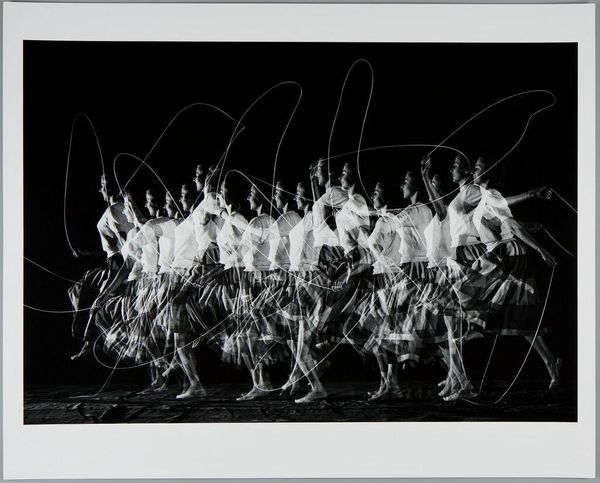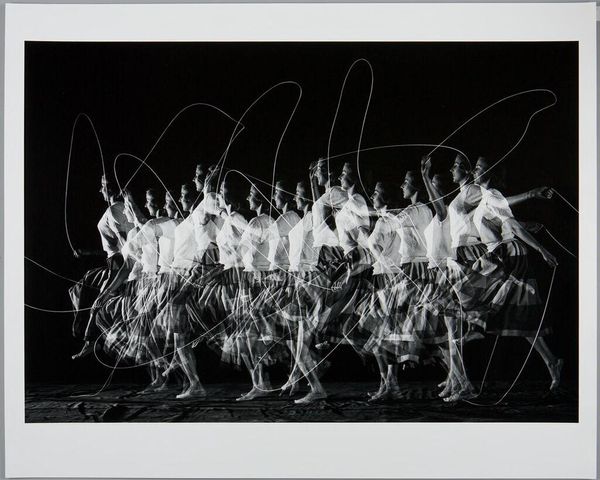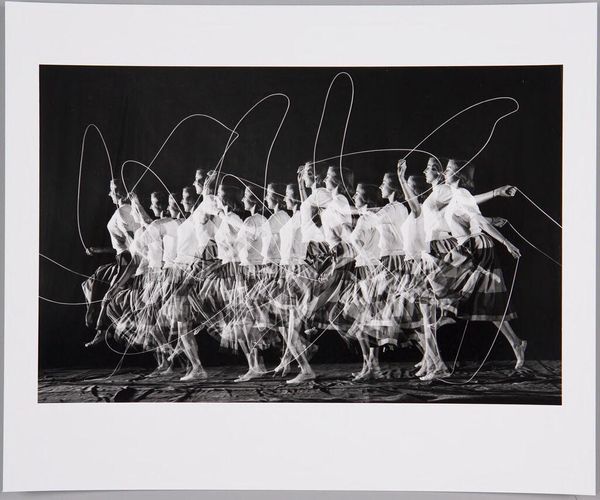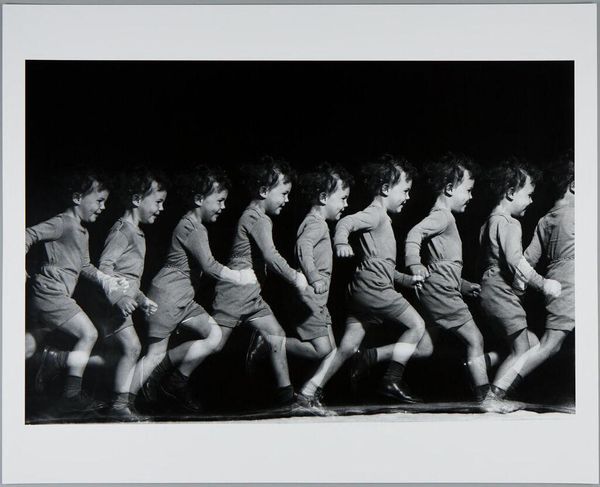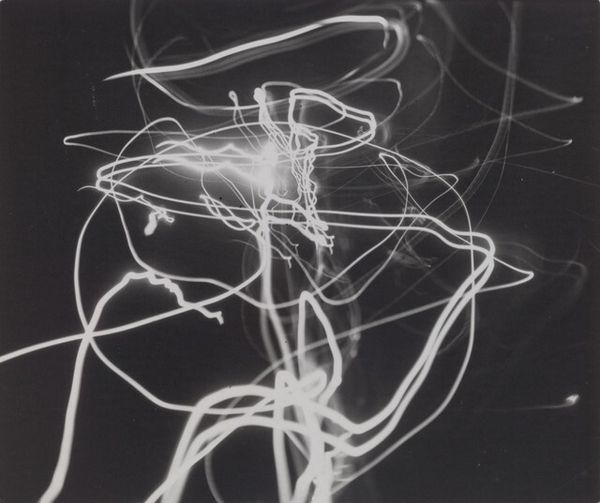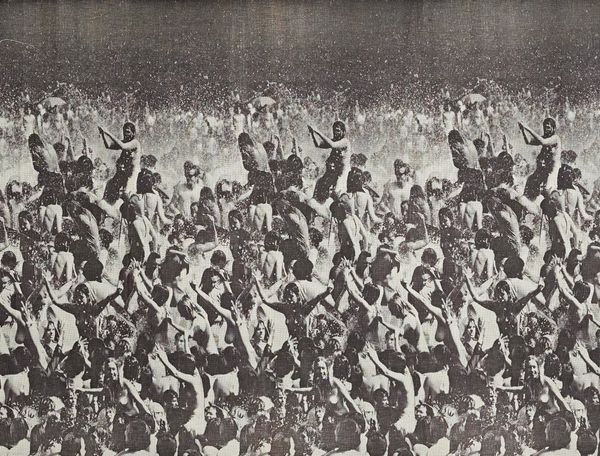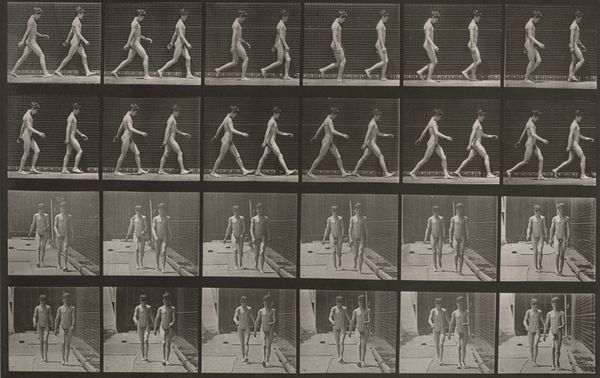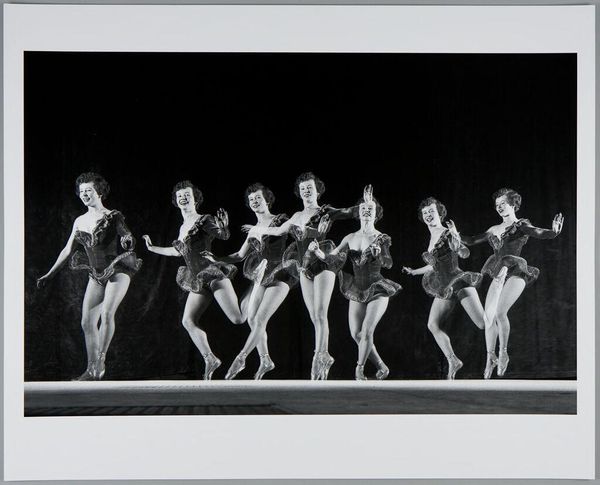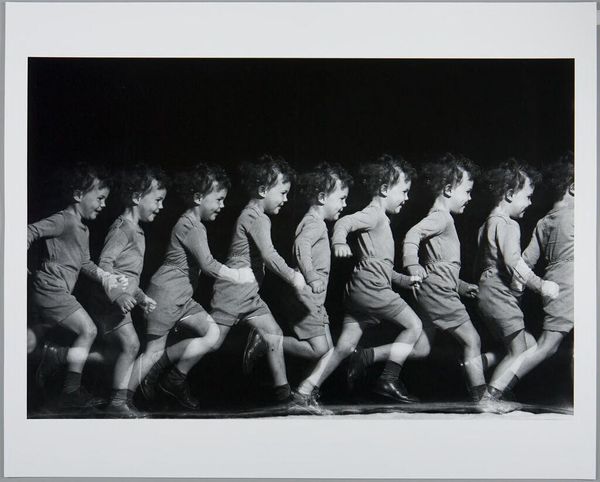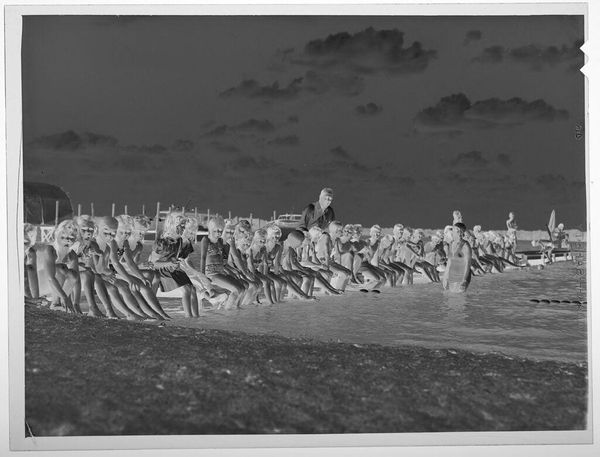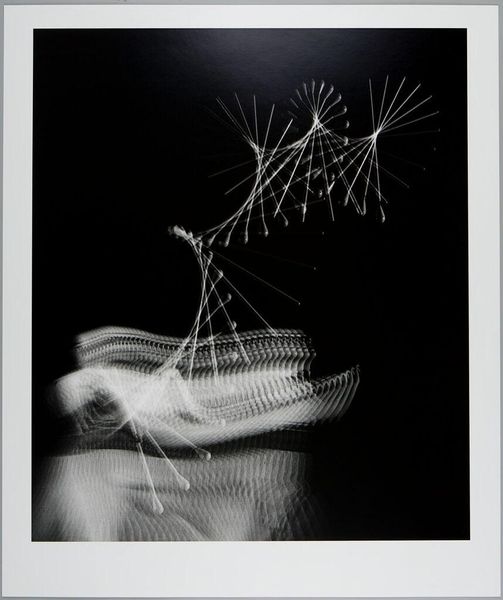
photography, gelatin-silver-print
#
portrait
#
kinetic-art
#
conceptual-art
#
street-photography
#
photography
#
gelatin-silver-print
Dimensions: image: 32.7 × 47.31 cm (12 7/8 × 18 5/8 in.) sheet: 40.64 × 50.48 cm (16 × 19 7/8 in.)
Copyright: National Gallery of Art: CC0 1.0
Editor: So, this is Harold Edgerton's "Moving Skip Rope," possibly created sometime between 1952 and 1981, using gelatin silver print photography. The figure repeating across the frame is fascinating and almost looks like a zoetrope in still form. What are your thoughts when you look at it? Curator: The visual fragmentation in Edgerton's photograph acts as a powerful metaphor. Here, we are not simply viewing an image of a woman skipping rope, but witnessing the deconstruction of time itself, isn’t it? Editor: I never thought of it that way! Curator: Consider how this photographic technique mirrors early feminist critiques of linear, patriarchal histories. Each frame presents a different moment, challenging the singular narrative often imposed on female bodies. It also recalls discourses in physics exploring space-time as a single continuum. It begs questions about agency, too. Editor: So you are saying that this image questions ideas around what the subject is actually doing and asks about who defines movement and freedom. It could be pushing us to look beyond the obvious representation of "a woman jumping". It becomes about visual storytelling! Curator: Exactly. Now, can you consider how its composition speaks to the evolving representation of women during the mid-20th century and consider how the layering can represent historical and ongoing issues related to race and inequality in terms of who gets to tell which stories, and how stories about specific groups and communities become popularized through image culture? Editor: The image has many overlapping and interconnected pieces; in the past, that may have just represented the visual movement of the person but is now making me consider societal concepts. I now appreciate that an artwork can make you question popular assumptions and narratives that have been shared historically. Thanks! Curator: Indeed. This makes it an exceptional piece for discussing social issues in the field of art and visual culture.
Comments
No comments
Be the first to comment and join the conversation on the ultimate creative platform.
